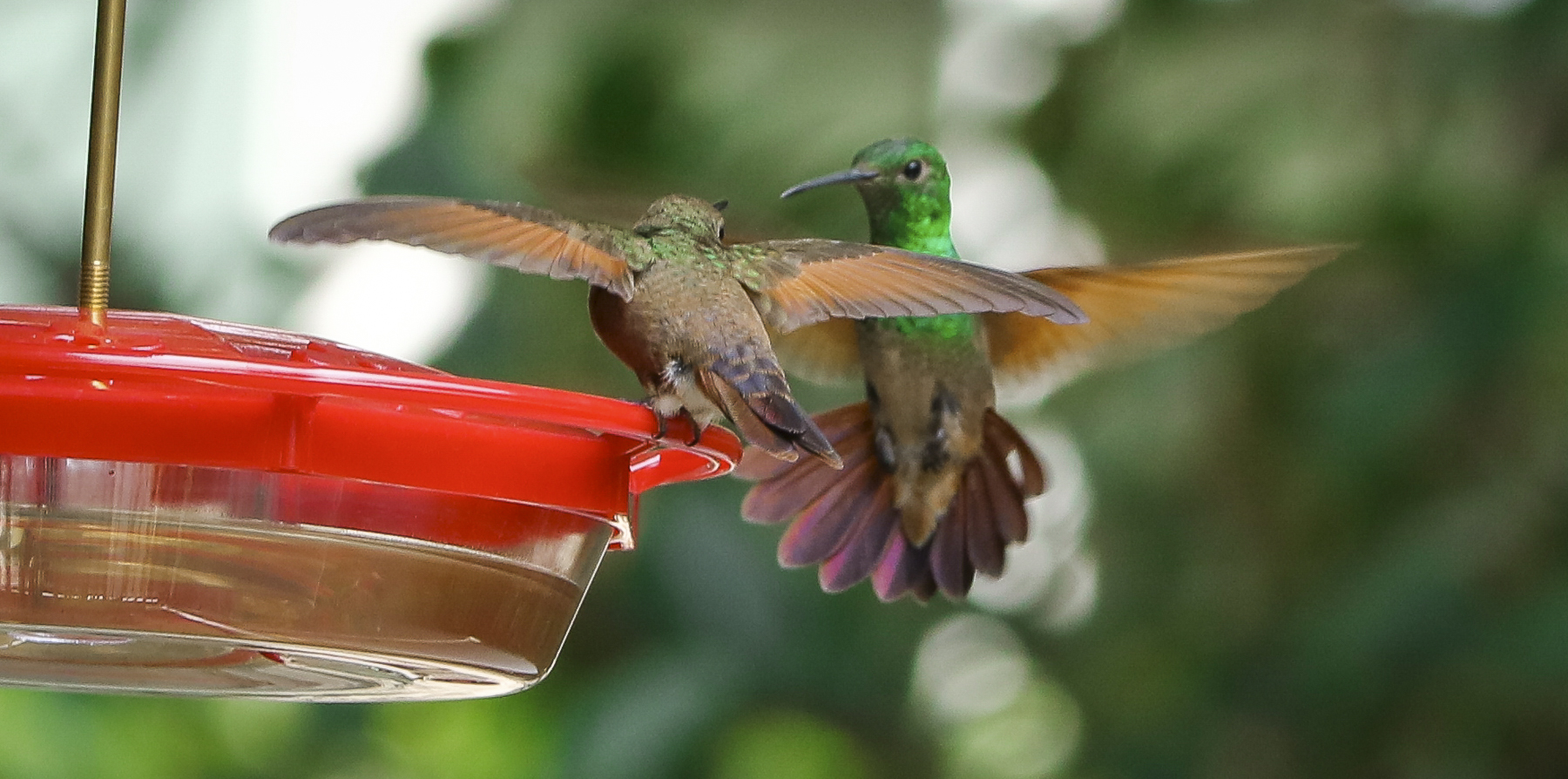Two berylline hummers jostle for a spot at the feeder.
STORY AND PHOTOS BY KARISHA KUYPERS
My telework setup has all the trappings of the modern knowledge worker lucky enough to be able to work from home during the COVID-19 sanitary restrictions: A computer loaded with at least four different video conferencing apps. A work cell phone. A larger than strictly necessary coffee mug. Large binoculars and a camera with telephoto lens. … Wait, what?
No, I’m not spying on my Mexico City neighbors, though I try to get good photos of the many roaming street musicians who are now walking up and down the blocks of my relatively safe and secure neighborhood playing their instruments for tips, after being forced out of their informal economy jobs by the city shutdown.
My primary focal point is the semi-tropical bushes and trees in front of my apartment window, scanning them for migrating birds that have stopped for a brief respite on their way back to breeding grounds further up in North America. The camera is on a tripod ready to take photos of the Mexican resident hummingbirds that live in the large fig tree next to my apartment. In short, I am using this time during my never-ending conference calls to stay sane by doing some urban birding in the midst of a global pandemic.
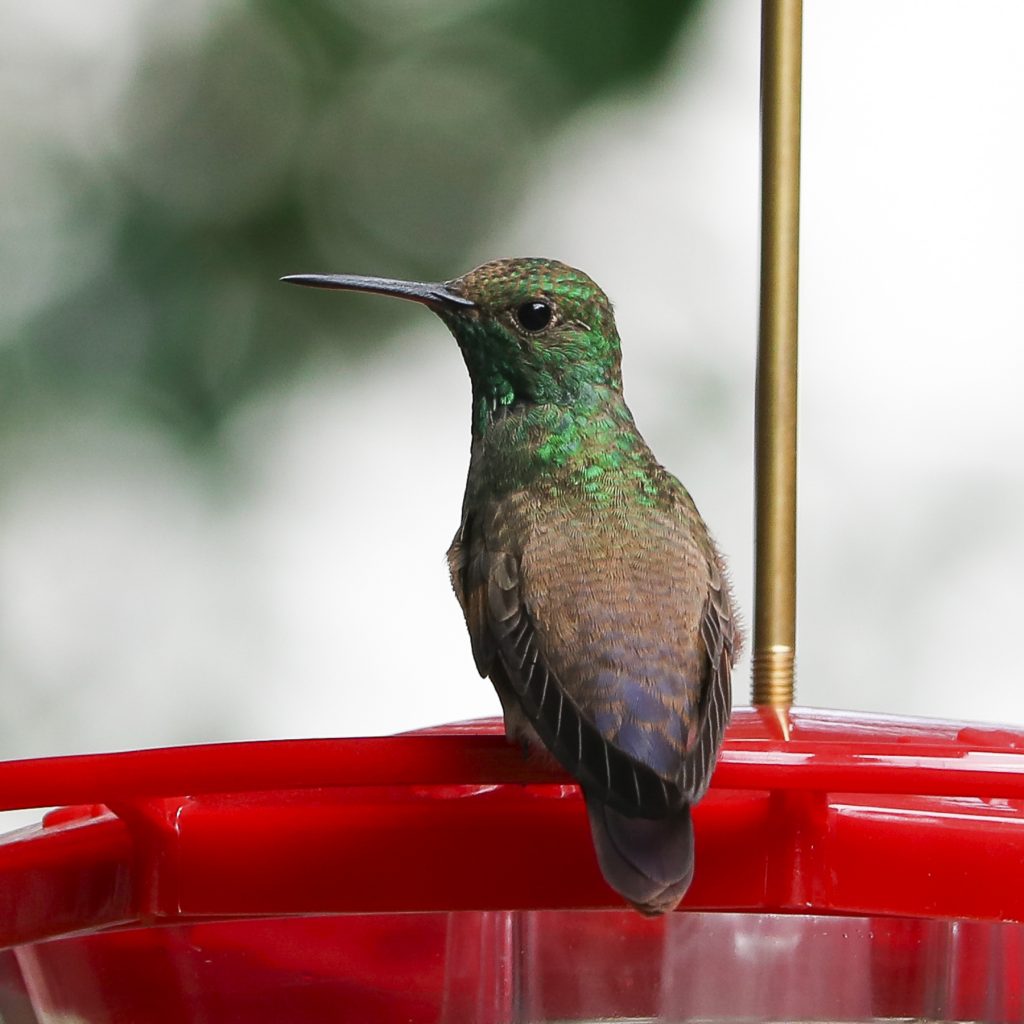
Quarantine restrictions give you the time to really get to know the habits and behaviors of your resident hummingbirds. Berylline hummingbirds like this one are fiercely territorial and completely fearless, dive-bombing birds five times their size and chasing off any other hummers who get close to the feeder.
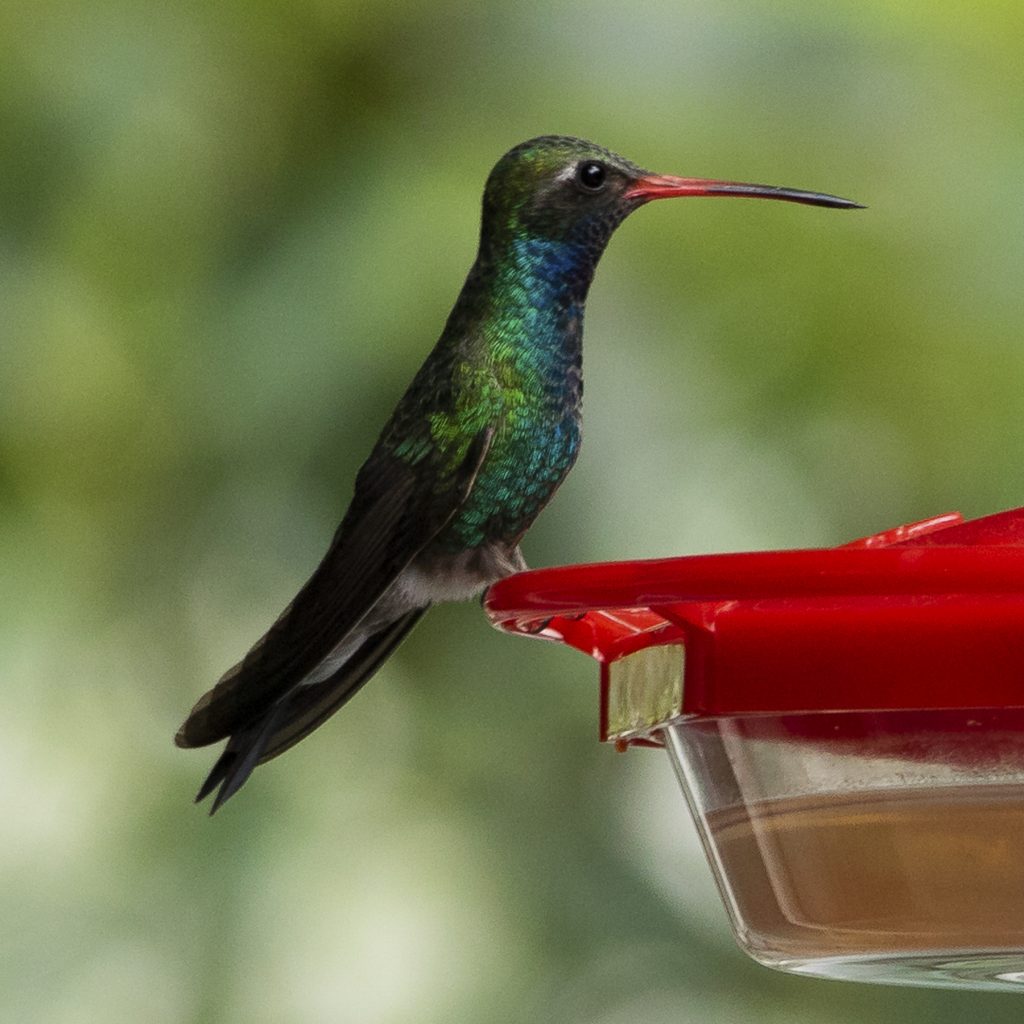
Broad-billed hummingbirds (pictured, male) are the other common hummers found in Mexico City. These jewel-colored birds engage in some astounding aerial gymnastics with the berylline hummers for access to the bird feeder.
I have been a birder for over 20 years. What began as a mild interest after a college natural history class became somewhat of an obsession during my assignments abroad as a U.S. foreign service officer. I now figure among the estimated 45 million people in the United States who, as a hobby, regularly watch birds, travel to see birds, or generally obsess about finding new birds.
But even with so many birders out there, I find that birding remains a bit of an oddball hobby. I have learned to embrace the stigma of “that birding weirdo” though. I bring my binoculars on work trips. I try to go on birding tours whenever I go to a new place. Watching and learning about birds, especially when I travel to other countries, teaches me about new cultural and ecological environments. It also keeps me present and in the moment, as I take time away from work email to truly observe the place I am in. Plus, birding allows you to appreciate the beauty of the natural world and nature’s ability to live in even the most urban of environments.
Which is why I have my binoculars at the ready as I work from home. The parks in Mexico City are still closed, and it’s difficult to get to the better birding areas outside of the city. So I sit in my home office, watching the antics of the fiercely territorial hummingbirds that chase each other up and down the alley next to my apartment. I scan the bushes to see if any new migrants have shown up today. And I know that even though I might be confined to my home right now, my bird friends are living their lives unrestricted in the big wide world, with maybe just a little less interference from us humans at the moment.
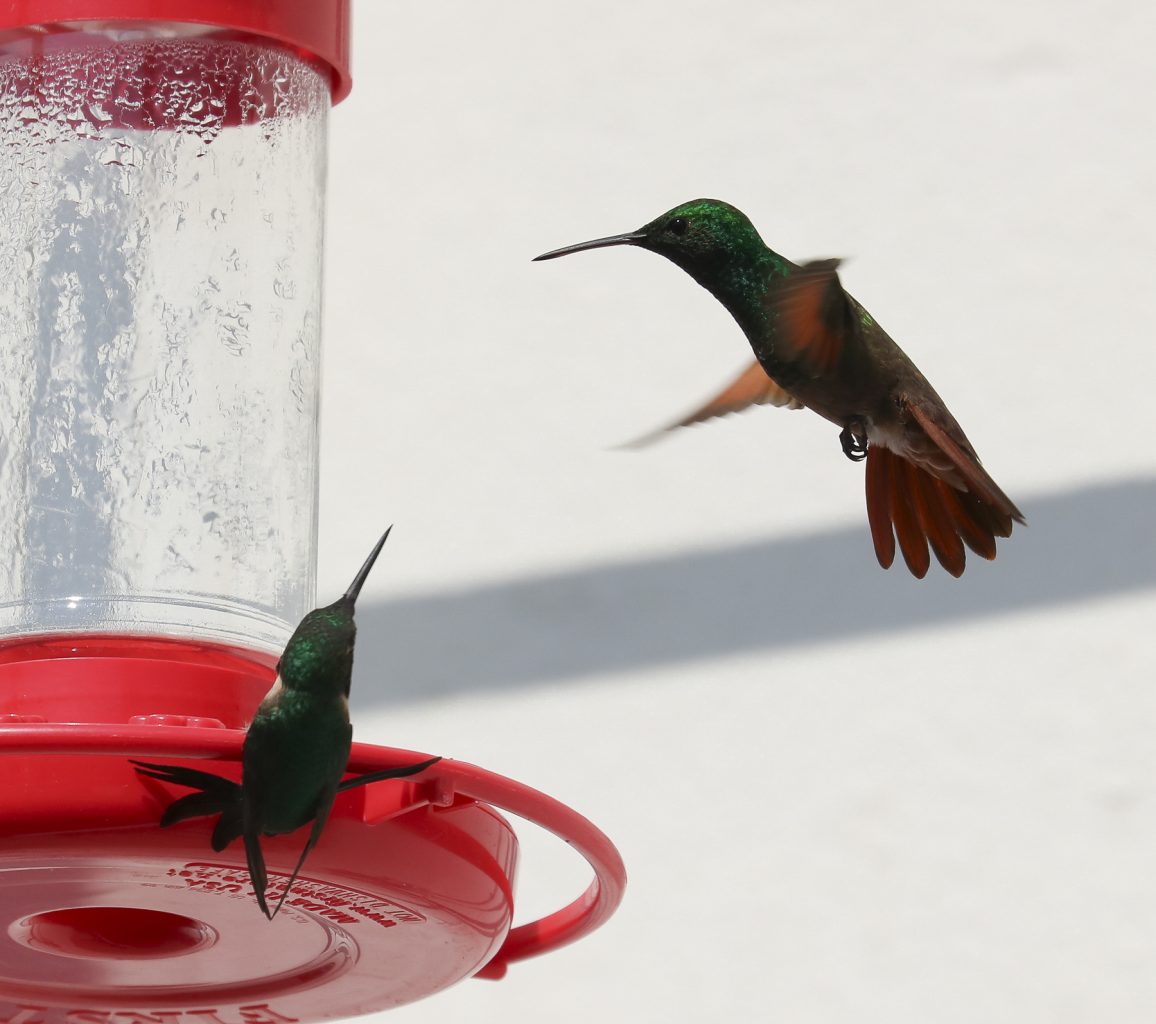
Fights for access to the bird feeder are everyday occurrences. A berylline attempts to intimidate a migrating ruby-throated hummingbird.
If these confinement times have you more curious about the birds you’re seeing, check out these tips from National Geographic for getting started as a birder. For more in-depth information on birds and birding, head to the Cornell Lab of Ornithology or to the National Audubon Society.
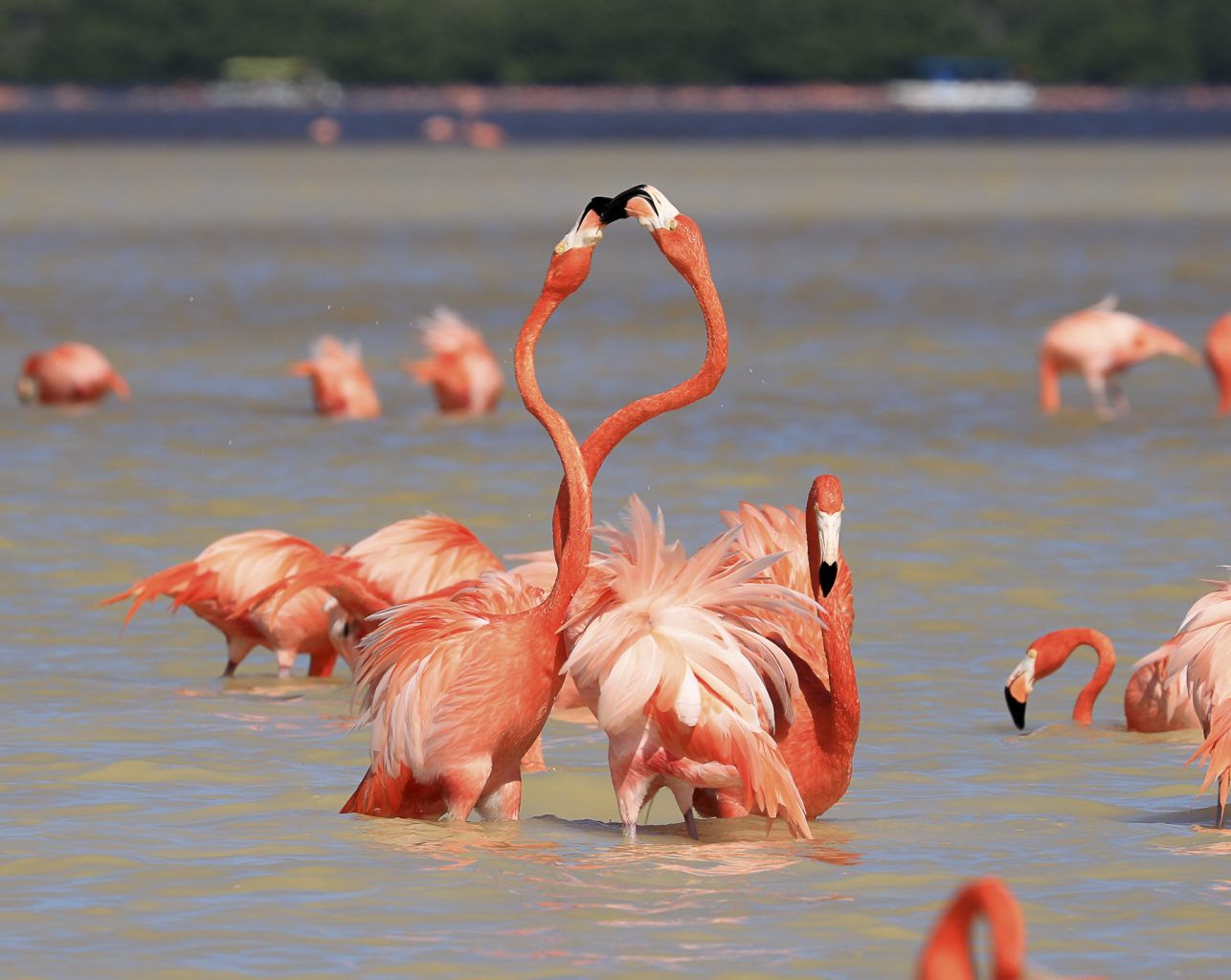
From more travel-friendly times: Tens of thousands of American flamingos congregate in the Ria Celestún Biosphere Reserve on the Yucatan Peninsula during the winter mating season. Locally-hired boats will take you down the river to see masses of the pink birds (and the occasional crocodile!) in the shallow water.
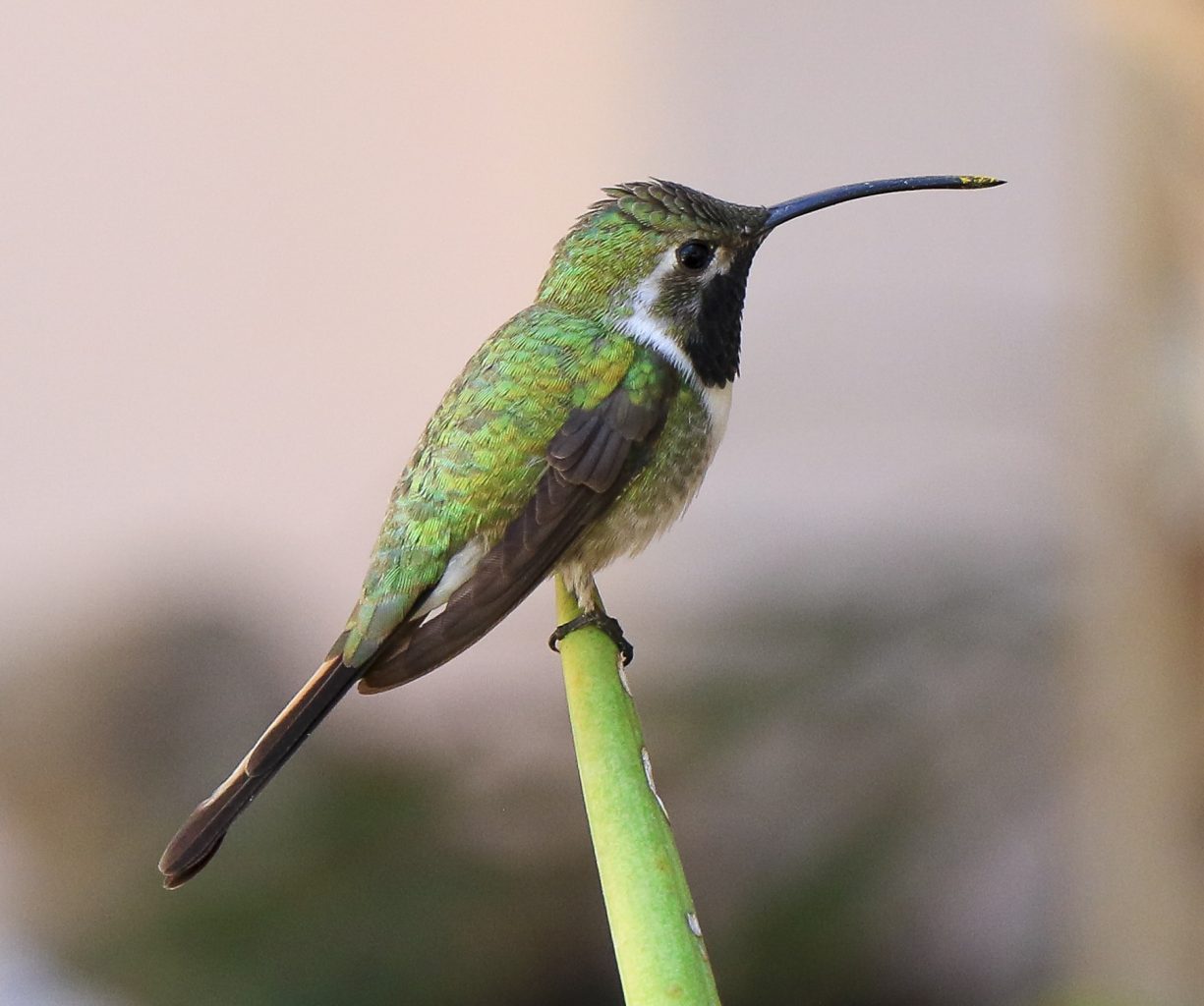
(Left) My bird guide and I spent an entire morning tromping through the Celestún jungle to find the Mexican sheartail hummingbird, which is only found on the Yucatan Peninsula. We didn’t find it in the jungle. However, I did finally find him outside the restaurant I had breakfast at the next morning.
(Right) Mexico is dotted with ancient ruins. An insider tip is that they are typically great places to find birds. I spotted this turquoise-browed motmot, one of my favorite Mexican birds, next to the Sacred Cenote at Chichén Itzá.

The state of Chiapas in southern Mexico is filled with ancient Mayan ruins, spectacular scenery, and birds. While visiting the jaw-droppingly beautiful jungle ruins of Palenque, I added a dozen or more new birds to my life list, like this gorgeous golden-hooded tanager.

An enthusiastic traveler, birder, and foodie, you can usually find Karisha Kuypers tromping through fields in pursuit of birds or scouring new cities for the best local cuisine. She is a foreign service officer with the U.S. Department of Agriculture and currently lives in Mexico City.

